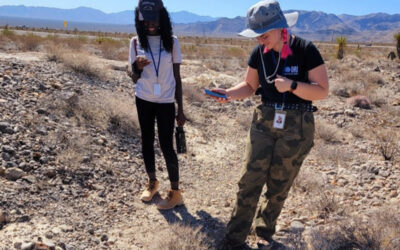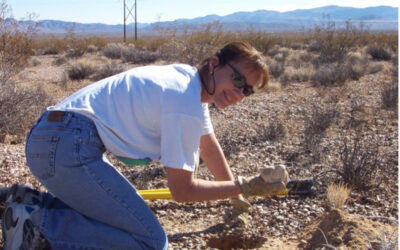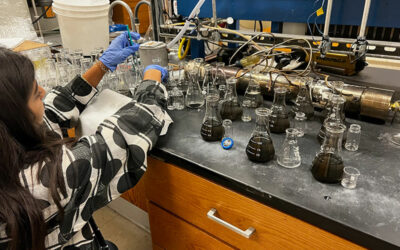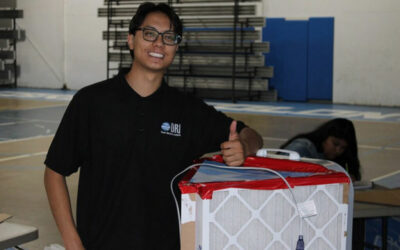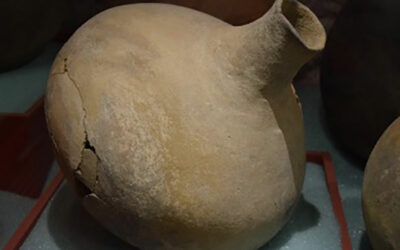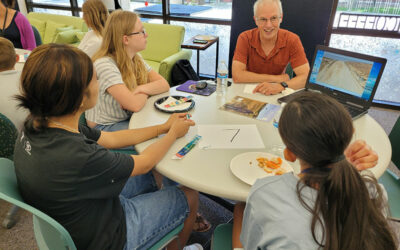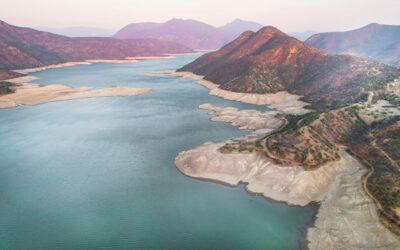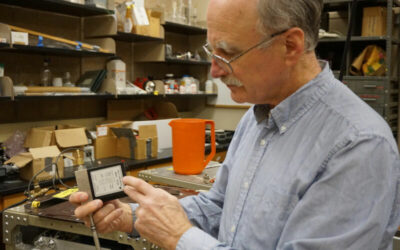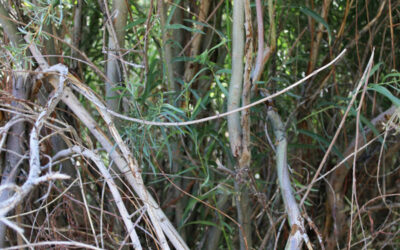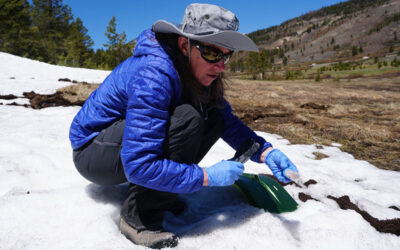Behind the Science Blog
DRI’s “Behind the Science” blog featuring our people and projects
Read the stories below to learn more about the amazing people and projects happening at DRI.

What’s in the Burnt Remains of the LA Wildfires?
DRI scientists deployed to Los Angeles to collect ash, soil, and dust samples from burn zones in the hopes of illuminating the unique risks of wildland-urban fires. These urban fires presented a unique opportunity to understand how materials like plastics, metals, and even lithium batteries from electric cars can transform into environmental contaminants when they burn.
DRI interns join the search for elusive desert tortoises in Tule Springs Fossil Beds National Monument
Tiffany Pereira’s student interns tracked elusive and threatened desert tortoises in the desert near Las Vegas, Nevada.
Lynn Fenstermaker: Celebrating a Career in Ecological Remote Sensing and NASA Space Grant Leadership
Lynn Fenstermaker, Ph.D., recently retired from DRI after 32 years. She studied large-scale questions about environmental stressors.
DRI Opens Doors to Careers in Scientific Research with Student Internship Program
Erick Bandala’s student interns studied ways to filter excess fluorides from drinking water during the fall 2022 semester.
Estom Yumeka Maidu Student Teaches DIY Air Filtration Techniques to Help Reservation Communities During Wildfire Season
Many houses have no particulate filtration systems, especially on reservations. Piercen Nguyen and his colleagues have a proven solution.
What can prehistoric ceramics of the California deserts tell us about the past?
DRI archaeologist Greg Haynes recently completed a synthetic report on the prehistoric ceramic artifacts of the Colorado and Mojave deserts.
Tim Minor: Celebrating a Career in GIS and Remote Sensing
Tim Minor, M.A, recently retired from DRI after 31 years. His successful career as a geographic information systems (GIS) and remote sensing scientist brought him to DRI in 1991.
New Study on Non-Tailpipe Emissions in Southern California
In a new study, researchers take a closer look at some overlooked pollutants, known as non-tailpipe emissions.
New research examines the potential impacts of climate change on water quality in tropical reservoirs
In a new study, scientists including DRI’s Erick Bandala, Ph.D., address how a warming climate alter water quality in tropical reservoirs.
Jim Hudson: Celebrating a Career in Cloud Physics
Research Professor Jim Hudson, Ph.D., DRI’s longest-serving employee, recently retired from DRI after 51 years studying cloud physics.
Restoring our relationship with hímu (willow) requires human interaction rather than protection
The continuation of life for the Wá∙šiw is based around plants like hímu. With it, they can help us understand our problems.
Heading to the mountains? The Living Snow Project needs your help
Murray, Nieminen, Collins, Christopher, and Lundin at DRI are studying snow algae as part of the Living Snow Project – a collaboration between DRI and Robin Kodner and her team at Western Washington University.
Meet Victoria Wuest, Graduate Researcher
Victoria Wuest is a graduate research assistant with the Division of Hydrologic Science at DRI in Las Vegas, mentored by Duane Moser, Ph.D.
